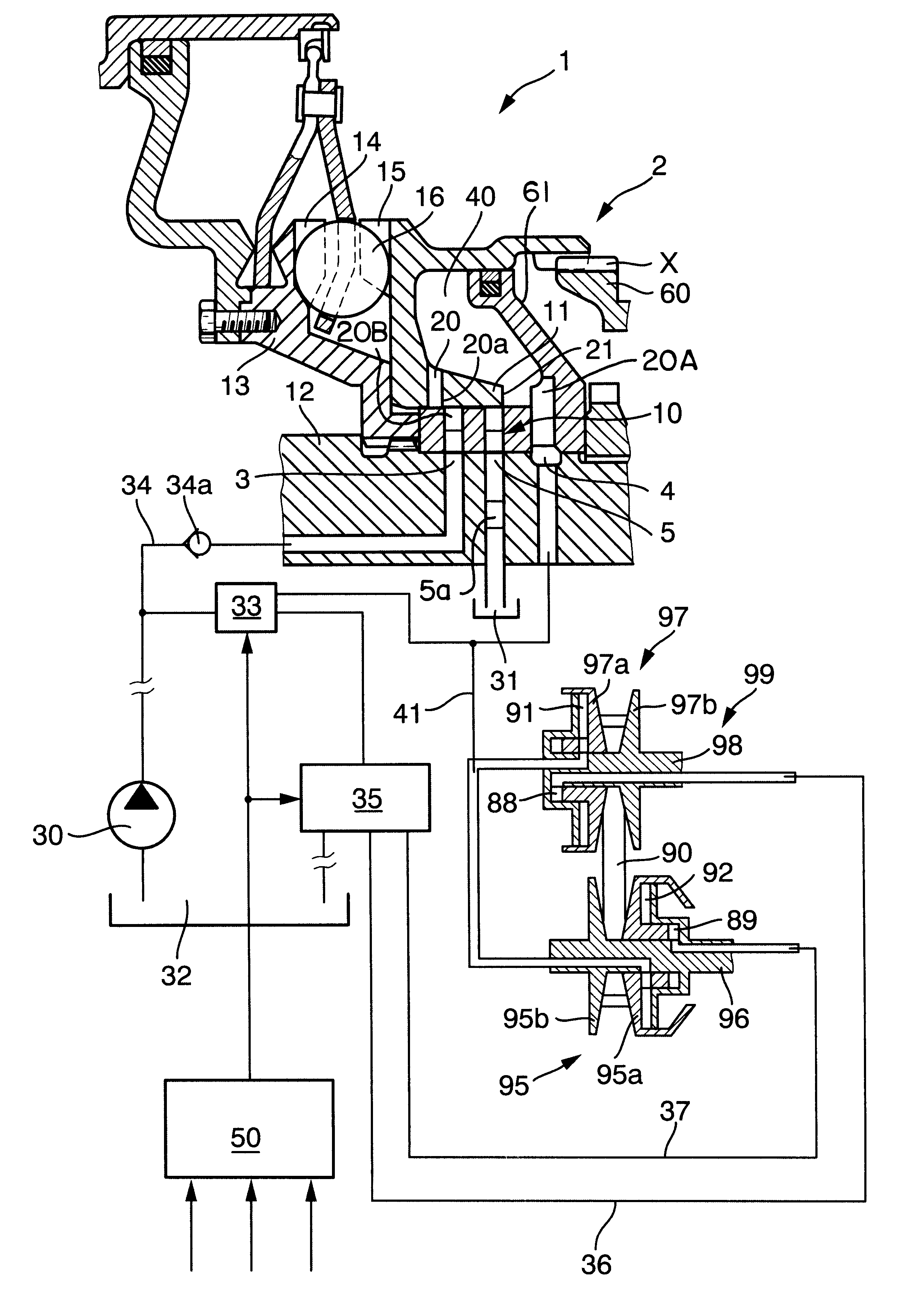Torque sensor for a motor vehicle power train
a technology for torque sensors and motor vehicles, applied in the direction of belts/chains/gearrings, belt control, instruments, etc., can solve the problems of unfavorable use of power trains
- Summary
- Abstract
- Description
- Claims
- Application Information
AI Technical Summary
Benefits of technology
Problems solved by technology
Method used
Image
Examples
Embodiment Construction
FIG. 1 shows a portion of a continuously variable transmission (CVT) 99 having a rotary driving unit and a rotary driven unit receiving torque from the driving unit by way of at least one endless flexible element 90 (e.g., a belt or a chain and hereinafter called chain). The driving unit comprises a shaft 98 and an adjustable pulley or sheave 97 having a first conical flange 97b affixed to the shaft 98 and a second conical flange 97a rotatable with and movable axially of the shaft 98 toward and away from the flange 97b. The driven unit of the transmission 99 comprises a rotary shaft 96 which is or which can be parallel to the shaft 98 and an adjustable pulley or sheave 95 composed of a first conical flange 95b affixed to the shaft 95 and a second conical flange 95a arranged to rotate with and being movable axially of the shaft 95 toward and away from the flange 95b. The chain 90 is trained over the pulleys 95 and 97.
The driving unit of the transmission 99 further comprises means for...
PUM
 Login to View More
Login to View More Abstract
Description
Claims
Application Information
 Login to View More
Login to View More - R&D
- Intellectual Property
- Life Sciences
- Materials
- Tech Scout
- Unparalleled Data Quality
- Higher Quality Content
- 60% Fewer Hallucinations
Browse by: Latest US Patents, China's latest patents, Technical Efficacy Thesaurus, Application Domain, Technology Topic, Popular Technical Reports.
© 2025 PatSnap. All rights reserved.Legal|Privacy policy|Modern Slavery Act Transparency Statement|Sitemap|About US| Contact US: help@patsnap.com


